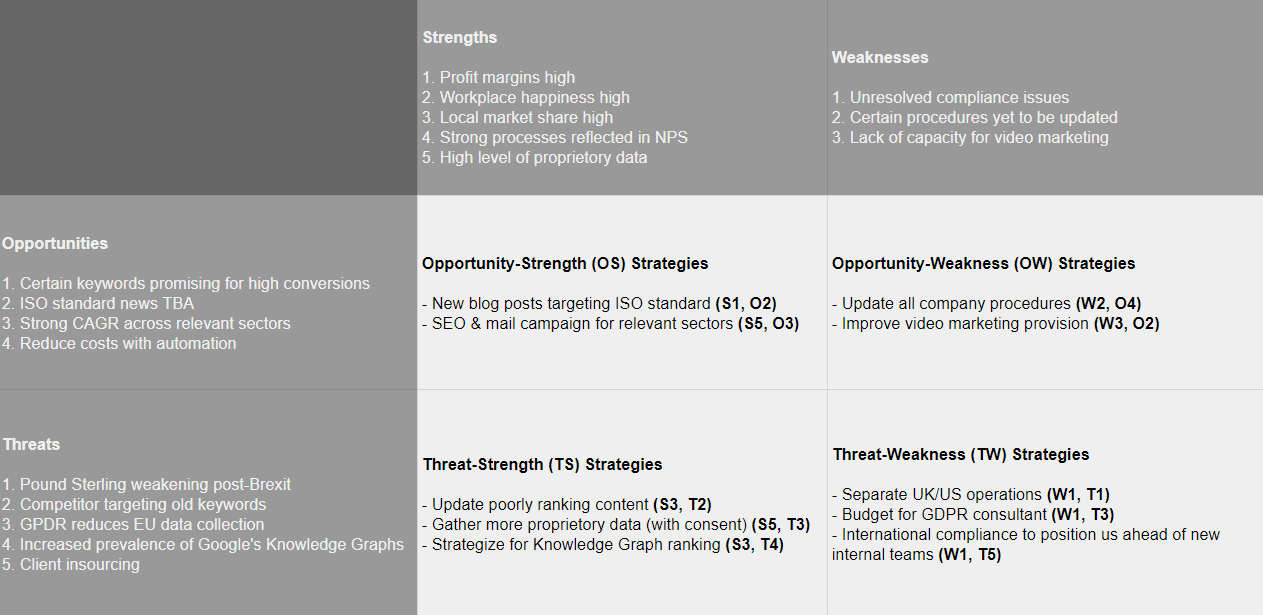Welcome
Implementation of a QMS within an organization is considered a strategic decision; a robust, meticulously designed QMS can help to improve general performance and is the groundwork for sustainable development initiatives.
This document is intended as a kind of quality reference-manual (or mini-manual) for use at Brightstar Marketing.
It is essentially a high-level overview of all standard operating procedures in use at Brightstar, and serves as your reference point for understanding, deploying, and updating workflow processes throughout the organization.
Quality Policy
How we define quality
Here at Brightstar, we are dedicated to delivering, maintaining, and exceeding the highest quality standards to our existing and growing customer base in a timely and consistent manner.
How we achieve quality (how it’s implemented)
Part of this process includes management of the QMS and all related processes by way of planning, testing, reviewing, and updating in a “Plan-Do-Study-Act” (PDSA) methodology, with focus on “Risk-Based-Thinking” leading to the prevention of undesirable outcomes.
Our quality standards are designed to bring control and consistency into all of the procedures we use. Part of this control is in how we document our procedures to ensure consistency.
The documented information will comprise the following:
- Operations Mini-manual: A high-level overview describing the policies and procedures in place to meet the standard.
- Procedures: As part of the mini-manual, these actionable procedures as process templates within the Process Street platform constitute a unified system which contains complete Work Instructions for how to perform a process, and Forms to provide additional information and evidence to support the system.
Breakdown of quality assurance tools
When a new procedure is needed there are two approaches Bright Star Marketing takes depending on the requirements for the process to meet the strategic goals of the business. The first version could be created with an emphasis on rapid deployment at the level of minimum viable process, or it could be carefully planned in advance using the DFSS framework. Most of our activities benefit from an agile approach to process creation and we explain how our QMS holds that to high standards in the section below. DFSS is deployed in accordance with the Quality Assurance Manager.
The procedure is subsequently tested and improved upon, until those final procedures deemed worthy to become a standard within the company are subject to Failure Modes and Effects Analysis (FMEA) (PR. 21) to ensure company quality standards are met.
Much of these quality assurance policies are addressed by existing practices, though they may or may not be clearly documented. Other requirements of the standard may not be addressed at all, and will need to be implemented and documented adequately.
We utilize the Process Street software for storing, managing, improving, and following our processes and procedures. New processes are constructed collaboratively by the teams which use them, and are optimized using PR. 22. When these processes have been approved to become company procedures, we employ PR. 21 to complete the formalization process. We utilize DMAIC to improve already formalized procedures.
- We trust our team members to understand their roles and responsibilities. When new tasks arise, team members are expected to record their activity in order to create an initial process. That process will then be informally assessed by the team. If the scope and purpose is deemed appropriate, the team nominates a member to run PR. 22. PR. 22 will continue to be run by the nominated member until it is felt the process is ready to be submitted to the QAM for approval.
- Recurring processes will be submitted for review to become company approved procedures. The most critical processes will be improved and informally assessed by the QAM. The QAM then runs the FMEA process to ensure they’re up to our standard, and risks have been assessed, and they are ready to be implemented throughout our organization.
- For business-critical procedures, we employ the DMAIC technique, based on the Six Sigma system of process improvement. This procedure is overseen by the Quality Assurance Manager.
We satisfy all customer and ISO 9001:2015 requirements and continue to improve our processes to enhance customer satisfaction and loyalty.





